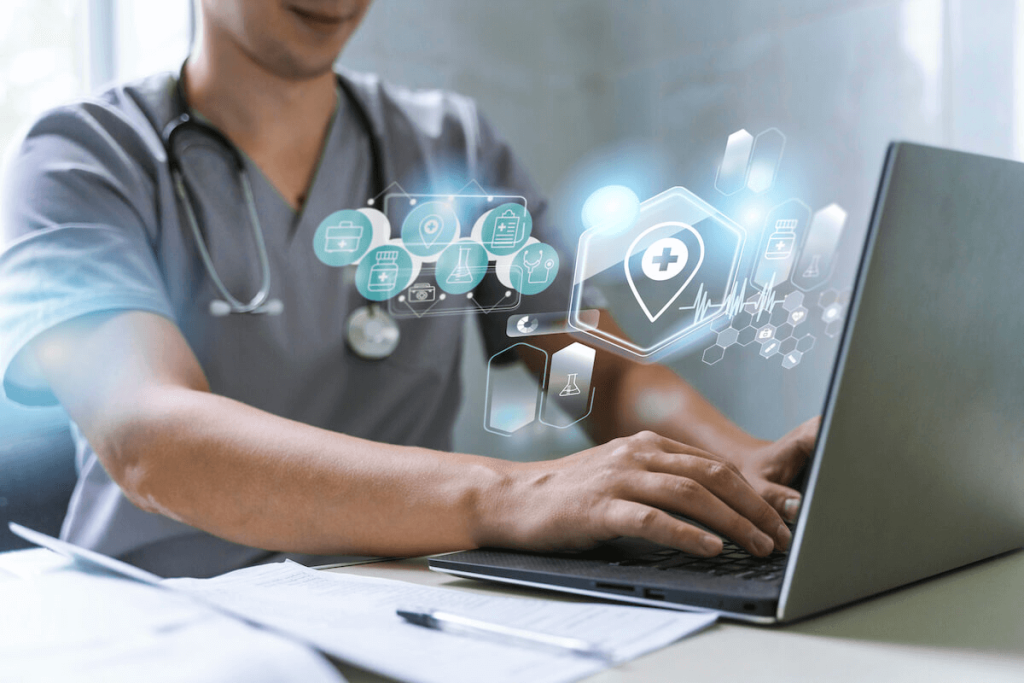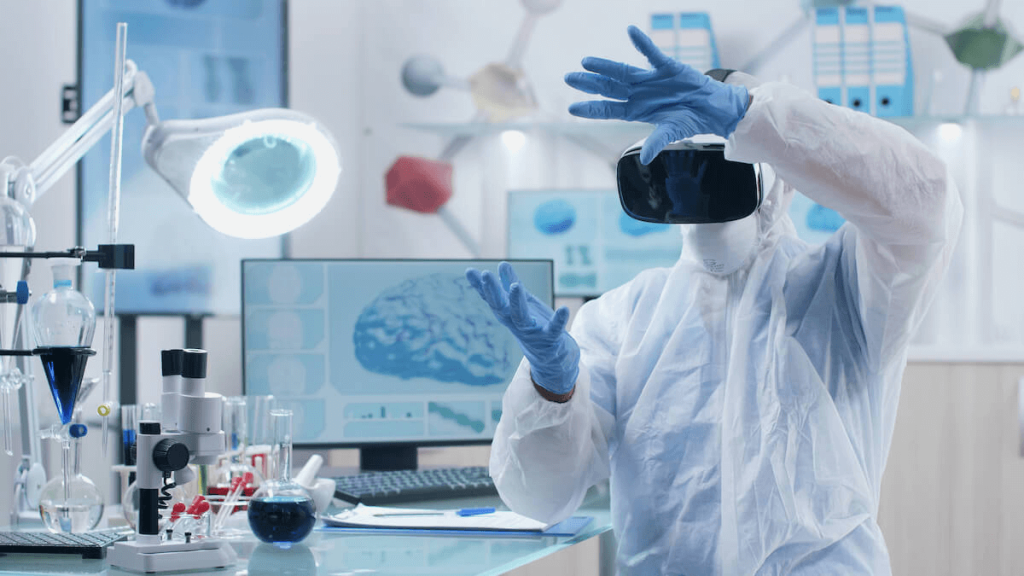
When thinking about the future, science fiction has often painted society in the future as having non-geometric buildings bedazzled with millions of lights, non-existent highways filled with flying cars, holographic billboards and wireless modes of communication are commonplace, and machines working jobs humans used to do.
Healthcare Industry
In the real world, at least in the present, four of the six things mentioned have become a reality. Buildings that follow non-Euclidian shapes grace the skylines and hold events worldwide. Structures such as the inflatable, orb-like Ark Nova by architect Arata Isozaki and artist Anish Kapoor have held concerts from Japan to Switzerland since 2013; electronic billboards and lights cover almost every major road. Meanwhile, gadget manufacturers worldwide seem intent on replacing data transfer systems with wireless technology, and machines are replacing human labor in manufacturing, analytics, and now even entertainment and creative work.
In the industrial application of technology, telecommunications remained important thanks mainly to the increasing and almost ubiquitous presence of the most significant example of a telecommunications network: the Internet. Today, the presence of the internet has become a critical aspect of people’s lives. And although it has its downsides, the internet remains largely valuable for numerous aspects of life, such as healthcare. While self-diagnosis is not recommended and remains a problem for healthcare providers and patients alike for its inaccuracy, the internet has helped the industry reach more patients’ homes through advancements such as telemedicine.
The Rise of Telemedicine
Telemedicine is a variation on the doctor’s consultation. With it, patients who are otherwise unable to visit a health facility can consult with a health professional regarding their ailments and mental health issues through a phone, tablet, or computer. Telemedicine evolved quickly from traditional phones; it now uses smartphones and computing technology to conduct consultations via video call, providing health professionals with a better angle on treating and helping patients.
With the increased demand for health services during the pandemic, telemedicine became a popular and preferred option to obtain these services and allowed care delivery that removed the obstacles once considered a necessary step. Now, companies left and right offer the service as a retail product, while others are part of employee insurance packages. Telemedicine lowered administrative costs without sacrificing patient satisfaction.

The transformation of healthcare lies in the common features of everyday devices. Though probably unnoticed, these everyday devices have helped provide equitable access to healthcare in seemingly simple ways. Users of Google Suite and smartphones may not greatly appreciate it, but cloud storage is helping streamline collaborative patient care. Before, a single person would have one medical file per hospital or doctor. But thanks to the innovation of cloud technology, health professionals and even nurse practitioners no longer have to backtrack with different hospitals to get a complete view of a person’s medical history, thereby allowing health equity. The technology is also used with other innovations, such as telemedicine, providing ready access anytime.
Improvement of Workflow Technology
Another example is the improvement workflow technology has brought to the industry. With it, scheduling appointments, vendor qualification, hospital facilities management, and more can be done quickly and outside office hours. Imagine knowing which hospitals can perform the particular tests and treatment you need while informing you of your insurance policies with specific care centers. This presents another change that might need to be noticed but can provide convenience and well being to its users. Those mentioned before are the advancements already in use in the healthcare industry. With more in the pipeline, artificial intelligence is being groomed as the latest technological concept to watch out for.
Role of AI in the Industrial Revolution
The rise of artificial intelligence (AI) and its application in various industries has been an important issue since the beginning of the fourth industrial revolution. The eventual adaptation to innovative technology brought lesser expenses through the decreased need for skilled human laborers. Beyond those in production and manufacturing, digitalization has also forced other sectors to transform or be left at the bottom. From construction supervisors and schoolteachers to market analysts and medical assistants, more and more jobs now require mastery of at least one digital system, also known as digital fluency. Despite this, research shows that people are beginning to accept AI in various industries, such as service delivery, with convenience and social influence as major contributing factors.
AI has always been about mimicking human cognitive functions. This is precisely the reason for creating AI-powered language models such as ChatGPT, which has been proven to create works of art and meaningful essays from a few word prompts. You might ask what artificial intelligence can do in healthcare without robotic doctors and surgeons. Currently, AI in healthcare is categorized in two ways:
Machine Learning (ML)
The first, Machine Learning (ML), analyzes structured data such as imaging (X-rays and electroencephalograms), genetic, and electrophysiological data. In AI medical use, this program can help collect a patient’s traits or suggest the probable outcomes of diseases. Imagine education and prevention of chronic diseases like coronary artery disease by being able to read structured data accurately.
Natural Language Processing (NLP)
Second is Natural Language Processing (NLP), which extracts information from unstructured data, including clinical notes and medical journals. These programs can then support the findings gathered from structured data.
Combined, these two technologies emulate the work done by educated and experienced doctors and physicians. The existing concepts may even expand given time and produce more complicated variations. Despite the high potential of using AI to save lives, it is essential to think about the moral and humanistic argument about the practice. Of course, in the discourse about AI-powered language models, it should be noted that AI only presents a part of the equation. Programs still rely on human prompting and a wealth of knowledge actual doctors have gathered over the years to generate a response. Human skill, sentience, curiosity, and compassion are not something artificial intelligence can cause. At least not yet.
With technological innovations being developed daily, humanity can now travel to the lowest depths of the ocean and upwards to the heavens not for discovery but for leisure. Robotic engineering firms such as Boston Dynamics are creating robots that mimic animal behavior, QinetiQ for use in the military, and Amazon as industrial workers. If a revival of the robotics trend is dawning, it might not be long before robots assist surgeons everywhere.
The future we have envisioned is slowly coming to life. With research as a trusted source, we can only assume new opportunities in the next decade or so. We foresee new techniques, healthcare trends for various age, develop new medicines or new drugs to battle chronic disease, and the ability to predict and control an illness and provide precision care. With innovations bringing what were once futuristic concepts to reality, our vision of the future continues to evolve with new knowledge and new specialties. Meanwhile, other industries left behind are slowly catching up, sometimes just for their sake, while others bring meaningful change.

Check out our House and Lot for Sale Properties
Discover our house and lot for sale properties in the Philippines


